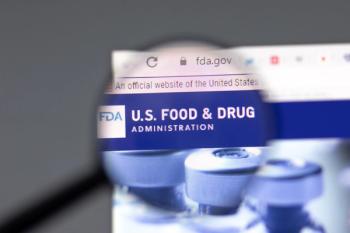
- Applied Clinical Trials-07-01-2010
- Volume 0
- Issue 0
Transparency Efforts to Reshape Research
More information may be available on drug applications to expand public understanding of FDA policies.
Transparency has become the leading philosophy governing biomedical research and regulation. The FDA and the National Institutes of Health (NIH) are requiring more disclosure of financial relationships between industry and scientists and physicians. Health reform legislation authorizes public access to extensive information on health-related activities, including formulary listings, out of pocket consumer costs, comparative studies, and payments from pharmaceutical companies to health professionals. Some members of Congress would like to go further and require public disclosure of prices charged for pharmaceuticals, as well as for hospital care and doctor visits.
Jill Wechsler
Opening the black box
FDA also has launched a Transparency Initiative to provide the public with more information on its policies and practices as a way to build public confidence in its decisions. A new FDA-Track program will issue regular reports on the work and performance of 100 agency offices to better convey the broad scope of FDA responsibilities and accomplishments.
More significant for pharma and biotech companies are recent proposals from the agency's Transparency Task Force to disclose more information on field inspections, product recalls, and the status of drug development and market applications. In announcing the program in June 2009, Commissioner Margaret Hamburg emphasized the need to dispel FDA's "black box" image by expanding its ability to explain agency rules and processes.
Under the leadership of Principal Deputy Commissioner Joshua Sharfstein, the task force unveiled Phase 1 in January, which established a Web-based "FDA Basics" course to promote public understanding of FDA processes and policies. Phase 3, due this summer, will propose ways for FDA to improve communications with regulated companies, primarily by streamlining guidance development and increasing meetings with sponsors. Phase 2, which was published May 21, 2010, includes 21 proposals for disclosing regulatory documents and actions. Some are quite far reaching and will require Congressional action to implement.
A significant group of proposals calls for disclosing when medical product manufacturers seek FDA approval to launch trials or to bring to market a new drug, biologic, animal drug or medical device. FDA also wants to announce when such applications are withdrawn, rejected or delayed, and to release Complete Response (CR) letters that spell out why the agency is not approving a submission and what the sponsor needs to do to get to market.
Sponsors often elect to announce when they file an IND (investigational new drug application) or a license application to demonstrate that a development project is moving forward; the FDA Amendments Act of 2007, moreover, requires manufacturers to post information about ongoing clinical trials and their results on
The task force proposes that FDA disclose IND filings, including name of sponsor, date of application, and anticipated indication and trade name. The agency also would indicate when an IND is placed on clinical hold or is terminated or withdrawn.
FDA would provide similar information on the status of market applications for new drugs, biologics, and medical products under this plan. The agency now announces only when it approves a medical product for market, but not when a manufacturer files such an application; interested parties may glean some of this information from company financial reports and FDA advisory committee review materials.
Now FDA seeks authority to disclose when a company files a market application or efficacy supplement, as well as when such applications are withdrawn or abandoned. Related to this, the task force wants FDA to be able to explain when a sponsor abandons or withdraws an application for an orphan drug due to internal business reasons, as opposed to safety concerns or regulatory issues, and that this should not deter another party from developing that needed therapy.
An important and controversial proposal is for FDA to release refuse-to-file notices and CR or not-approvable letters. Sponsors often will issue a summary of a CR letter to acknowledge a delay in approval and outline a scenario for reaching the market in the future. But FDA wants to fully explain its nonapproval decisions, and investors and consumers are eager to access the agency's full statements.
However, the transparency panel decided not to seek disclosure or refusal of CR letters to generic manufacturers or for manufacturing and labeling supplements. The hundreds of manufacturing supplements filed each year contain a great deal of trade secret information that would be difficult to redact, and, the task force notes, "would provide little insight about the rationale underlying FDA's drug review process."
More on enforcement
The transparency task force also offers several proposals for expanding information on industry compliance and reporting activities. One plan is to disclose when FDA inspects a manufacturing facility, research site or institutional review board. Such listings would indicate whether a site visit uncovers violations or problems requiring corrective action, or if the entity comes out clean. FDA currently makes public some inspection reports that raise important safety or regulatory issues. Otherwise, interested parties have to request this info through the agency's freedom-of-information process, which can take months, if not years.
Some companies supported this plan, indicating that the information can help the industry understand FDA expectations and achieve compliance; FDA suggested that inspection results also may assist firms in selecting outside contractors and other business partners. Summary information about common violations could support these goals, as would the posting of untitled letters on the FDA Web site, along with a company's response.
An important initiative would require regulated companies to inform FDA when they conduct a product recall so that the agency can advise the public on what is being taken off the market, the number of items involved, and the cause of product defect. At the same time, FDA wants to be able to clarify which similar products are not being recalled and when the recall is completed. Implementing this provision may require Congress to give FDA mandatory recall authority, possibly through expanded food safety legislation awaiting action on Capitol Hill.
Another proposal would support public access to adverse event reports through a more user friendly Web-based information system. FDA also seeks to publish weekly listings of enforcement issues that are so important that the U.S. Department of Justice is taking the case to court.
Guarding secrets
An important consideration of the transparency initiative, said Sharfstein in a press briefing, is to obtain an "appropriate balance" between expanded disclosure and ensuring confidentiality of trade secret information, which the task force considers key to maintaining investment in biomedical R&D. The panel acknowledges that a company's manufacturing methods and product formulations are trade secrets and should remain private. But other data, such as clinical trial results and adverse event reports, may be more appropriate for disclosure. The task force wants to consider the public benefit in withholding or releasing such information, as well as the often heavy cost of redacting trade secrets from to-be-disclosed material.
While FDA is not proposing here to release raw data from clinical trials, as opposed to summary information, the panel suggests that access to such information might be useful in some situations. It may help sponsors identify new opportunities for developing products, for example, and inform health professionals of potential safety signals. FDA now does not release raw data files, even nonidentifiable data, but is open to further discussion with outside organizations on the feasibility and benefits of doing so.
One factor guiding some FDA transparency proposals is the desire to harmonize U.S. policies with those adopted by the European Medicines Agency (EMA). The Europeans already disclose when a company files a marketing application or withdraws one, as well as the agency's evaluation of the product. The EMA also posts its reasons for denying approval of a new product or additional indication, which would be accomplished by revealing FDA's CR letters.
Implementing many of the FDA transparency proposals will require legislative action, as well as new rulemaking. In unveiling the proposals, Sharfstein explained that the task force focused on what was the "right thing" to do, policy wise, and not on the cost or feasibility of taking such action. Now the task force will review public comments, which can be submitted through July 20, and will conduct a legal and resource analysis for each item. Commissioner Hamburg will make the final decision on which proposals can be adopted internally and where it makes sense for the agency to seek Congressional action to permit more transparency in FDA decisions and documents.
Jill Wechsler is the Washington editor of Applied Clinical Trials, (301) 656-4634
Articles in this issue
over 15 years ago
Applied Clinical Trials Digital Edition - July 2010, Supplementover 15 years ago
Applied Clinical Trials Digital Edition - July 2010over 15 years ago
Osteoporosis Clinical Trials, Not for the Faint-Heartedover 15 years ago
Global Trials Get Personalover 15 years ago
Act coverover 15 years ago
Trials in Latin Americaover 15 years ago
Business and News Update July 2010over 15 years ago
Good, Bad or Indifferent?over 15 years ago
Standard of Care in Clinical Study BudgetingNewsletter
Stay current in clinical research with Applied Clinical Trials, providing expert insights, regulatory updates, and practical strategies for successful clinical trial design and execution.






.png)



.png)



.png)
.png)
